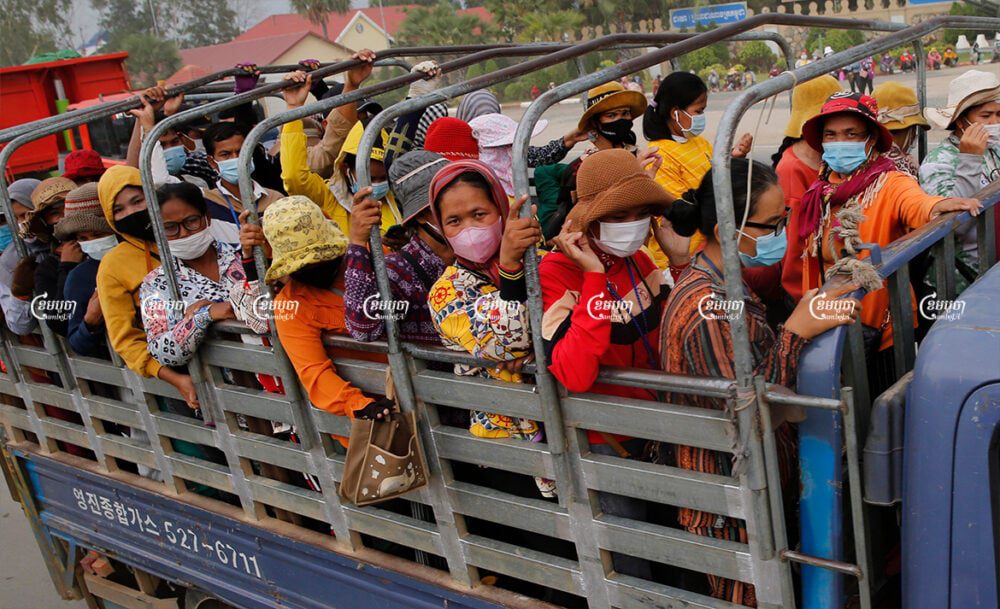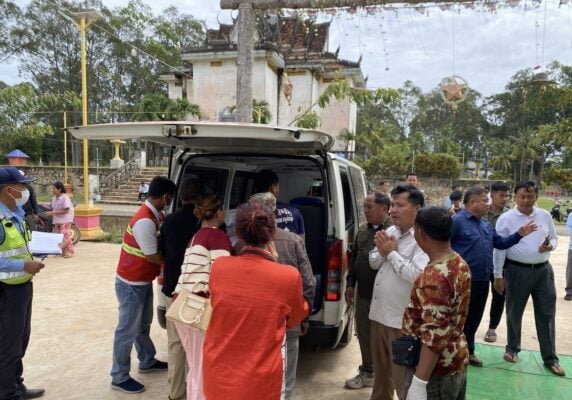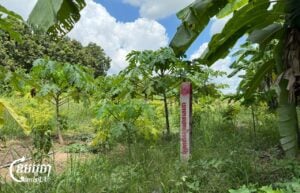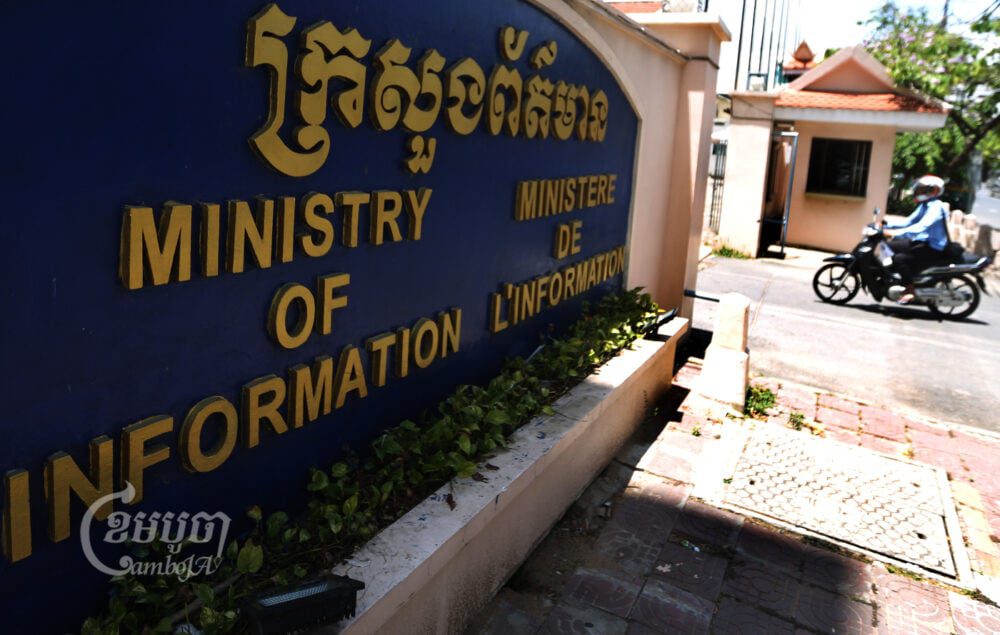Sunday marks one month since rising COVID-19 cases forced the closure of D’Luxe International Co., Ltd, a garment factory in Pur Senchey district that is just one of hundreds that suspended operations on April 9.
For Hat Phallat, a 27-year-old who works in the factory’s sewing section, the past few weeks have been filled with endless hardship as she struggles to get food, cover her rent, and continue to help pay off her family’s debt.
Phnom Penh’s three-week citywide lockdown ended Thursday, allowing hundreds of thousands who have been out of work to start earning a salary again.
But for Phallat and hundreds of thousands of people who live in areas marked as red or dark yellow zones, there is no return to work. And with COVID-19 cases continuing to rise in those areas, in spite of the weeks-long closures, workers are despairing.
“I don’t think that my factory will reopen soon because it is near Canadia Industrial Park where there are many workers infected with COVID-19,” she said.
“Now, my rice is nearly empty and I do not have money to pay for the rental room, electricity, and water and especially to pay what I owe to the bank — because my family borrowed $7,000 to build a house,” said Phallat, who spends $40 each month on her room and utilities, and more than $100 on paying off the five-year-old family debt.
“Now, I do not have money to pay the bank, so I will ask my parents to delay with the bank but I do not know whether the bank will allow that,” she said.
While the government says it has been providing food to needy families since the lockdowns began, the roll out has been rocky and many — including Phallat — still report having never received food aid. “I request the authority to help provide some aid for me,” she said, adding that she hoped they might give her $40 to cover the cost of her housing.
Yang Samean, 29, a worker at CG Glory (Cambodia) Manufacturing Company Limited, in Damnak Thom 3 village in Meanchey district, which is in a red zone, said she hasn’t worked for nearly a month — since her factory suspended operations amid rising cases.
In the lockdown area, she said, there isn’t much food to buy and the prices are higher than usual given the difficulties of bringing food in. For two weeks she suffered food shortage, though the situation has improved somewhat since receiving food aid a few days ago. But she still does not have money to pay for her rental room or utilities.
“I get hopeless because I do not know when my factory can reopen because there are a lot of new cases of COVID-19 every day,” she said.
Those who can return to work, meanwhile, fear getting sick as cases continue to rise.
Thy Bopha, 21, a worker at Trax Apparel (Cambodia) Co., Ltd in Sen Sok district’s Toek Thla commune, said that when she returned Thursday her bosses had set up temperature scanners and hand sanitizer, required workers to wear masks, and rearranged the factory floor to allow for social distancing.
“I am still concerned about the problem of COVID-19 infection but the factory requires me to return to work,” she said.
On Thursday, Phnom Penh Deputy Governor Keut Chhe defended lifting the citywide lockdown, saying that establishing targeted lockdowns of red zones and dark yellow zones, with high and medium levels of infection, was a more prudent way to proceed.
“So we decided to extend the lockdown for a week more between May 6 until May 12,” said Chhe said. “Most COVID-19 cases are in red zones and dark yellow zones where we had locked down already.”
Of the some part of 11 communes that remain red zones, however, some parts have been locked down since April 10, raising questions over how the lockdowns have been implemented and why rates haven’t dropped to safe levels after nearly a month.
Chhe urged patience among those living in those zones, saying an additional week of lockdown was needed to end the spread of the February 20 outbreak.
His words were echoed by Phnom Penh Deputy Governor Nuon Pharath.
“The purpose for lockdown is not to hurt citizens but to rescue the lives of citizens from COVID-19 infection,” he said.
He said authorities had provided nearly 300,000 packages of food aid supplied by Prime Minister Hun Sen in red and dark yellow zones and that they would continue to register anyone in need of aid.
On May 1, the Defense Ministry began vaccinating those living in red zones and he said nearly 200,000 people had received their first dose so far.
Mann Seng Hak, deputy president of Free Trade Union of Kingdom of Cambodia said workers will continue to suffer from another week of lockdowns and he hoped food aid would be better run going forward.
“Now the Phnom Penh administration minimized the red zone areas, so the authorities can control easier than before and they will know faster whether people are facing food shortage,” he said. Like the workers, he urged the government to step in to reduce the costs of rooms and utilities “while they do not have income yet.”
On Thursday, the Healthy Ministry recorded 650 new cases of COVID-19. As of Wednesday 114 people have died of COVID-19 — all from the latest outbreak. Health officials have recorded 17,066 new infections since the February 20 community event, with a total overall case count of 17,621 cases since the start of the pandemic in early 2020.











